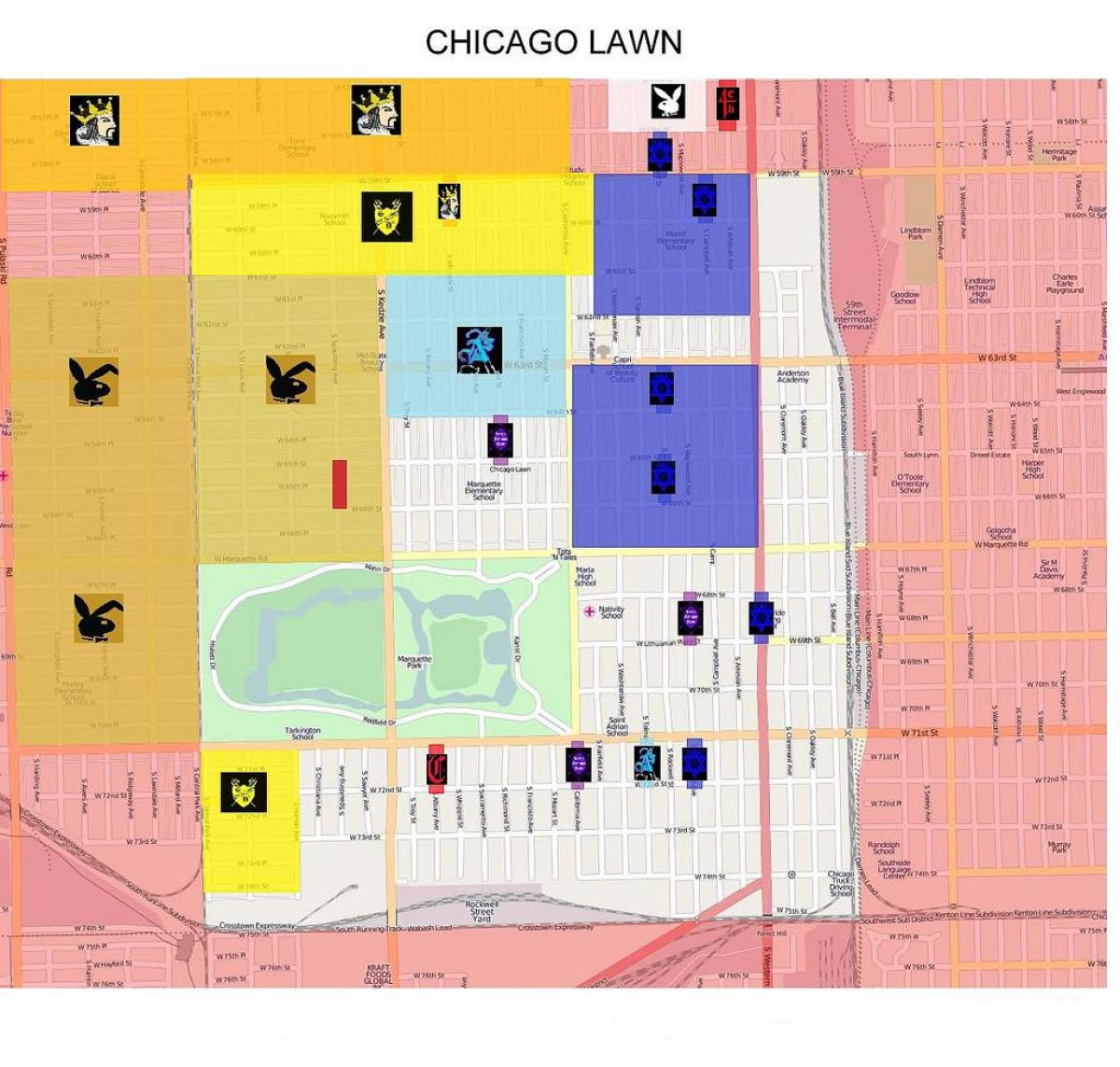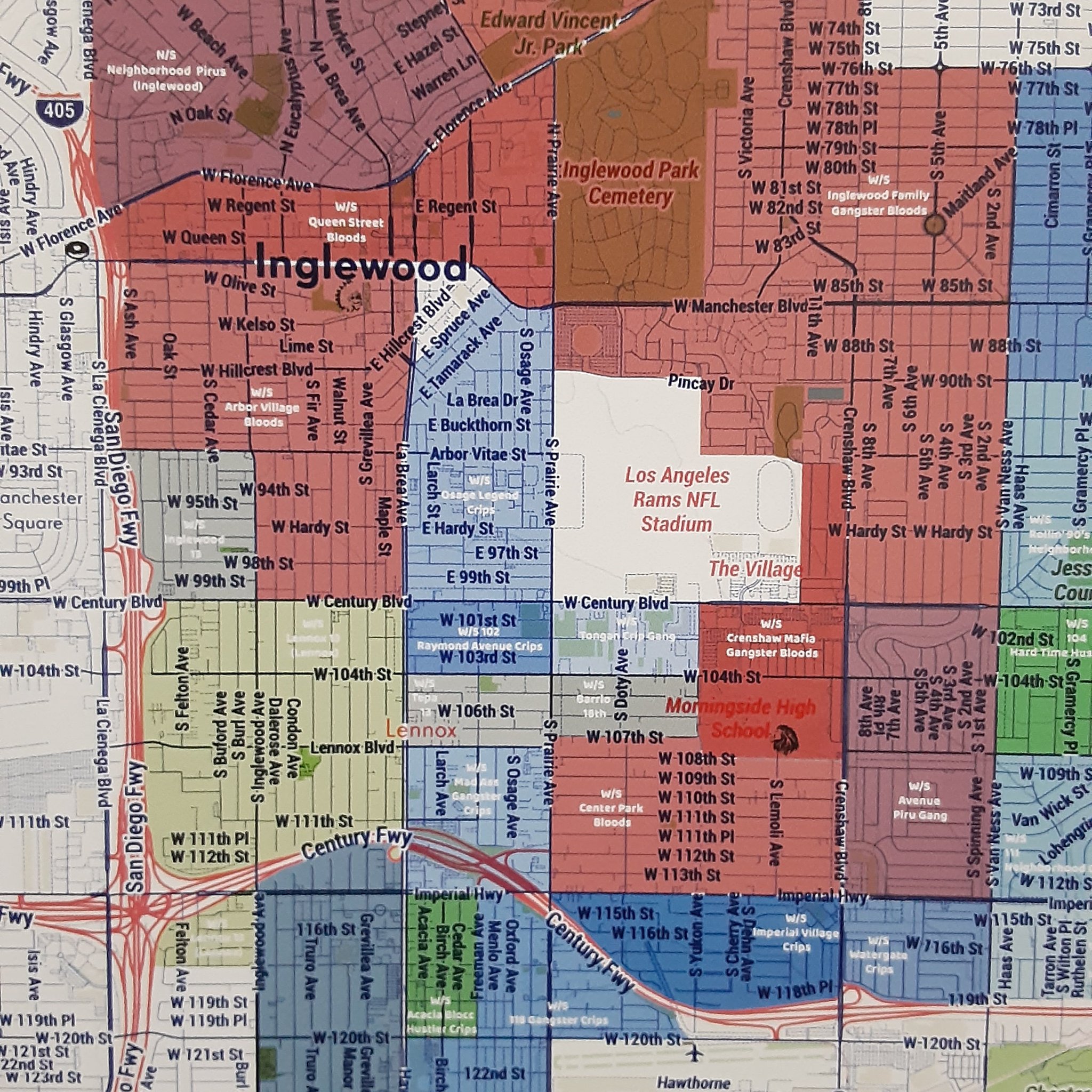So, here's the deal. You've probably heard the term "gang map" floating around in conversations or on the internet, but what exactly does it mean? Gang maps aren't just random charts or cool-looking graphics; they're powerful tools used by law enforcement, researchers, and even communities to understand the dynamics of gang activities. If you're diving into this topic, you're in the right place. We'll break it down for you in a way that's easy to digest but still packed with valuable insights. Let's dive in!
Gang maps have become a crucial aspect of modern urban planning and public safety strategies. They're not just about marking territories; they provide a deeper understanding of how gangs operate, their influence, and their impact on communities. Whether you're a student researching for a project, a community leader trying to improve safety, or simply someone curious about the world around you, understanding gang maps can open your eyes to a complex reality.
One thing's for sure: gang maps aren't just for cops anymore. They're becoming a vital resource for anyone interested in urban sociology, criminology, or even urban development. Stick around, and we'll take you through everything you need to know, from the basics to the more intricate details. Let's get started!
Read also:How Did George Michael Die Unveiling The Truth Behind The Icons Passing
What Exactly Is a Gang Map?
A gang map, in simple terms, is a visual representation of gang territories and activities within a specific area. These maps aren't your average road maps; they're detailed diagrams that show where different gangs operate, their boundaries, and sometimes even their alliances and rivalries. Think of it like a treasure map, but instead of gold, you're marking out turf wars and criminal hotspots.
Gang maps are typically created using data collected by law enforcement agencies, community reports, and sometimes even informants. This data is then plotted onto a map to give a clear picture of gang dynamics in a particular region. The maps can vary in complexity, from simple hand-drawn charts to sophisticated digital platforms that update in real-time.
One of the most interesting aspects of gang maps is how they reflect the ever-changing nature of gang activities. As gangs grow, shrink, or move, the maps evolve to reflect these changes. It's like watching a living, breathing map that tells the story of urban crime and conflict.
Why Are Gang Maps Important?
So, why should you care about gang maps? Well, they're not just for the police or criminologists. Understanding gang maps can help communities take proactive steps to improve safety and reduce crime. For instance, if you know that a particular area is a hotspot for gang activity, you can avoid it or take extra precautions when you're there. It's all about being informed and staying safe.
Moreover, gang maps are crucial for urban planners and policymakers. They help these professionals make informed decisions about where to allocate resources, such as police patrols or community programs. In essence, gang maps are a tool for empowerment, giving people the knowledge they need to make smarter choices about their environment.
How Are Gang Maps Created?
Creating a gang map is no small feat. It involves gathering a ton of data from various sources, analyzing it, and then presenting it in a way that's easy to understand. Let's break down the process step by step:
Read also:Charlie Sheen The Iconic Journey Of A Hollywood Legend
- Data Collection: The first step is gathering data. This can come from police reports, community surveys, informants, and even social media. The more data you have, the more accurate your map will be.
- Data Analysis: Once you've got your data, it's time to analyze it. This involves looking for patterns, such as where gangs tend to congregate or where crimes are most likely to occur.
- Mapping: The final step is creating the actual map. This can be done using traditional methods, like drawing on paper, or using advanced software that allows for real-time updates and interactive features.
Each step in the process is crucial for creating an accurate and useful gang map. It's like building a puzzle; each piece of data is a piece of the puzzle, and when you put them all together, you get a clear picture of the gang landscape in a particular area.
Tools Used to Create Gang Maps
When it comes to creating gang maps, there are several tools and technologies that professionals use. Here are some of the most common ones:
- GIS Software: Geographic Information System (GIS) software is a powerful tool for creating detailed and interactive maps. It allows users to layer different types of data onto a single map, providing a comprehensive view of the area.
- Social Media Monitoring: Social media platforms can be a goldmine of information about gang activities. By monitoring social media, law enforcement and researchers can gather real-time data about gang movements and activities.
- Community Input: Sometimes, the best data comes from the people who live in the area. Community members can provide valuable insights into gang activities that might not be visible through other means.
Using these tools, professionals can create gang maps that are not only accurate but also dynamic, changing as the situation on the ground evolves.
The Role of Gang Maps in Crime Prevention
Gang maps play a crucial role in crime prevention efforts. By providing a clear picture of gang activities, they help law enforcement agencies and community organizations develop targeted strategies to reduce crime and improve safety. Here's how:
First, gang maps help identify high-risk areas. By pinpointing where gang activities are most prevalent, law enforcement can allocate resources more effectively, such as increasing patrols or setting up surveillance in these areas. This can deter crime and make the community feel safer.
Second, gang maps can help in mediating conflicts. By understanding the boundaries and relationships between different gangs, authorities can sometimes intervene before conflicts escalate into violence. It's like being able to predict a storm and taking steps to protect yourself before it hits.
Finally, gang maps can be used to evaluate the effectiveness of crime prevention strategies. By comparing maps from different time periods, authorities can see whether their efforts are making a difference and adjust their strategies accordingly.
Success Stories: How Gang Maps Have Made a Difference
There are numerous examples of how gang maps have been used successfully to reduce crime and improve community safety. One notable example is the city of Los Angeles, where the police department has been using gang maps for decades. By understanding the dynamics of gang activities, they've been able to significantly reduce gang-related violence and improve the quality of life for residents.
Another success story comes from Chicago, where community organizations have used gang maps to develop targeted intervention programs. By identifying at-risk youth and providing them with mentorship and job training, these programs have helped reduce gang membership and related crimes.
Challenges in Using Gang Maps
While gang maps are incredibly useful, they're not without their challenges. One of the biggest issues is data accuracy. Since much of the data comes from reports and informants, it can sometimes be incomplete or biased. This can lead to inaccuracies on the map, which can, in turn, affect the effectiveness of crime prevention strategies.
Another challenge is keeping the maps up to date. Gang dynamics can change rapidly, and if the map isn't updated frequently, it can quickly become outdated. This requires a lot of effort and resources, which not all communities have access to.
Finally, there's the issue of privacy. Some people may feel uncomfortable about their personal information being used to create gang maps, especially if they live in areas with high gang activity. Balancing the need for accurate data with the right to privacy is a delicate task that requires careful consideration.
Overcoming These Challenges
Despite these challenges, there are ways to overcome them and make gang maps more effective. For instance, using multiple data sources can help improve accuracy. By cross-referencing information from different sources, you can get a more complete and reliable picture of gang activities.
Regular updates are also crucial. This can be achieved by setting up systems that allow for real-time data collection and analysis. Technology, such as GIS software and social media monitoring tools, can play a big role in this.
Finally, respecting privacy is essential. This can be done by anonymizing data and being transparent about how it's collected and used. By taking these steps, communities can create gang maps that are both effective and respectful of individual rights.
Future Trends in Gang Mapping
The field of gang mapping is constantly evolving, with new technologies and methods emerging all the time. One of the most exciting trends is the use of artificial intelligence (AI) and machine learning to analyze data and create more accurate and dynamic maps. These technologies can process vast amounts of data quickly and identify patterns that might not be visible to the human eye.
Another trend is the increasing use of community-driven data collection. With the rise of citizen science and crowdsourcing, more and more people are getting involved in gathering data about their communities. This can lead to more comprehensive and accurate gang maps, as well as greater community engagement in crime prevention efforts.
Finally, there's a growing emphasis on using gang maps not just for law enforcement but also for social services and community development. By integrating gang maps with other data sources, such as health and education statistics, communities can develop holistic strategies to address the root causes of gang activity and improve overall well-being.
What Does the Future Hold?
Looking ahead, the future of gang mapping looks bright. With advancements in technology and increasing community involvement, we can expect gang maps to become even more accurate, dynamic, and useful. This will not only help reduce crime but also improve the quality of life for everyone in the community.
Conclusion
So, there you have it. Gang maps are powerful tools that provide valuable insights into the world of gang activities. Whether you're a law enforcement officer, a community leader, or just someone interested in understanding the dynamics of urban crime, gang maps can offer a wealth of information. By understanding how they're created, their role in crime prevention, and the challenges they present, you can better appreciate their importance and potential.
We encourage you to explore this topic further and maybe even get involved in creating or using gang maps in your own community. Every bit of knowledge and effort counts in the fight against crime and the promotion of safety and well-being. Share this article with your friends and family, and let's work together to make our communities safer places for everyone.
Table of Contents:
- What Exactly Is a Gang Map?
- Why Are Gang Maps Important?
- How Are Gang Maps Created?
- Tools Used to Create Gang Maps
- The Role of Gang Maps in Crime Prevention
- Success Stories: How Gang Maps Have Made a Difference
- Challenges in Using Gang Maps
- Overcoming These Challenges
- Future Trends in Gang Mapping
- What Does the Future Hold?


